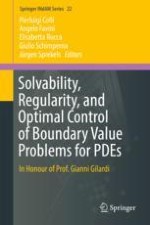This volume gathers contributions in the field of partial differential equations, with a focus on mathematical models in phase transitions, complex fluids and thermomechanics. These contributions are dedicated to Professor Gianni Gilardi on the occasion of his 70th birthday. It particularly develops the following thematic areas: nonlinear dynamic and stationary equations; well-posedness of initial and boundary value problems for systems of PDEs; regularity properties for the solutions; optimal control problems and optimality conditions; feedback stabilization and stability results. Most of the articles are presented in a self-contained manner, and describe new achievements and/or the state of the art in their line of research, providing interested readers with an overview of recent advances and future research directions in PDEs.
